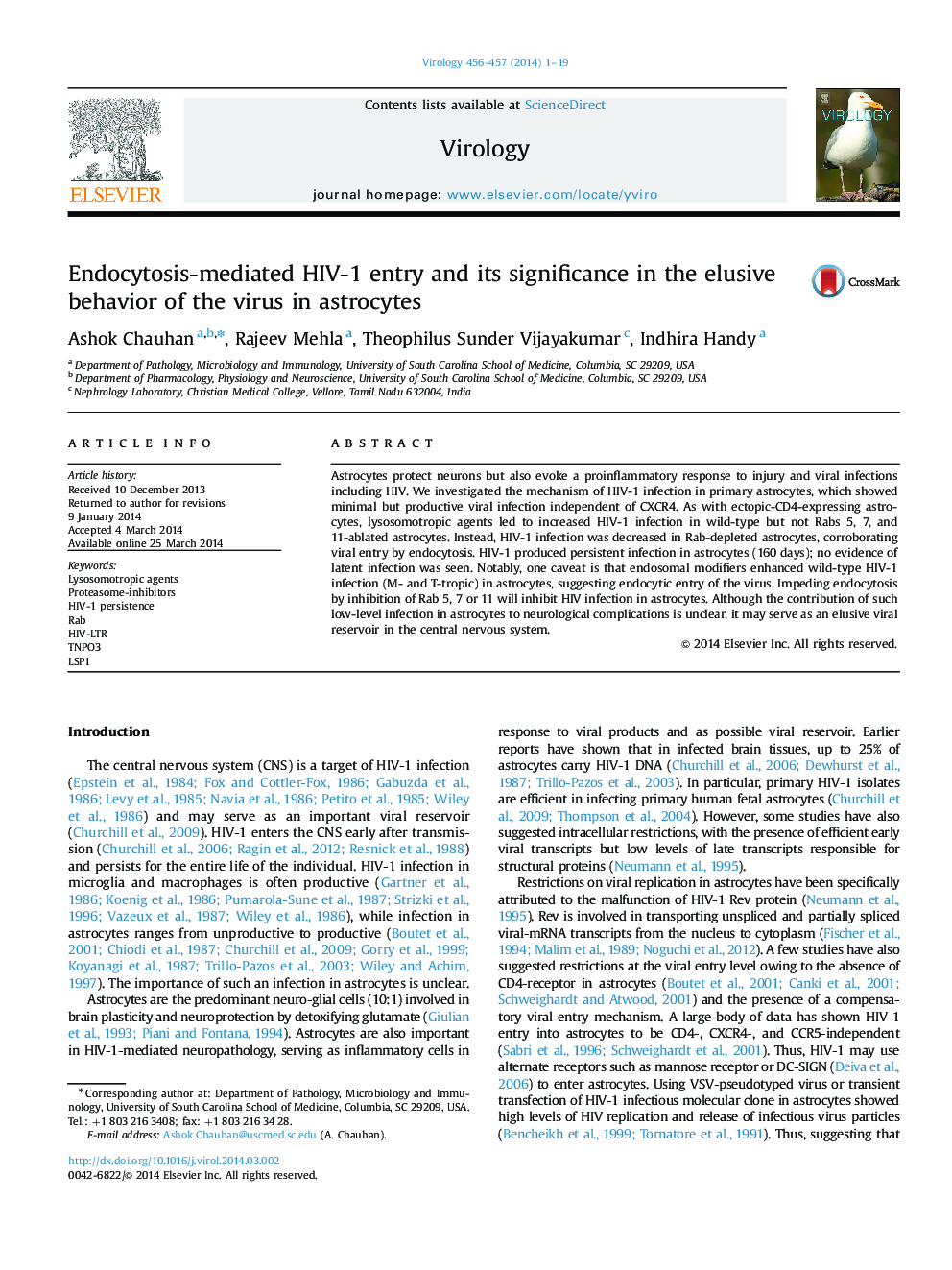| کد مقاله | کد نشریه | سال انتشار | مقاله انگلیسی | نسخه تمام متن |
|---|---|---|---|---|
| 6140139 | 1594250 | 2014 | 19 صفحه PDF | دانلود رایگان |

- We investigated the mechanism of restricted HIV-1 infection in astrocytes.
- Minimal natural HIV-1 infection in astrocytes occurred by endocytosis.
- Ablation of Rab 5, 7 or 11 inhibited HIV-1 infection in astrocytes.
- After HIV-1 entry bypass in astrocytes, profound infection persisted for months.
- Overall, our findings suggest that astrocytes serve as an elusive HIV-1 reservoir.
Astrocytes protect neurons but also evoke a proinflammatory response to injury and viral infections including HIV. We investigated the mechanism of HIV-1 infection in primary astrocytes, which showed minimal but productive viral infection independent of CXCR4. As with ectopic-CD4-expressing astrocytes, lysosomotropic agents led to increased HIV-1 infection in wild-type but not Rabs 5, 7, and 11-ablated astrocytes. Instead, HIV-1 infection was decreased in Rab-depleted astrocytes, corroborating viral entry by endocytosis. HIV-1 produced persistent infection in astrocytes (160 days); no evidence of latent infection was seen. Notably, one caveat is that endosomal modifiers enhanced wild-type HIV-1 infection (M- and T-tropic) in astrocytes, suggesting endocytic entry of the virus. Impeding endocytosis by inhibition of Rab 5, 7 or 11 will inhibit HIV infection in astrocytes. Although the contribution of such low-level infection in astrocytes to neurological complications is unclear, it may serve as an elusive viral reservoir in the central nervous system.
354
Journal: Virology - Volumes 456â457, May 2014, Pages 1-19